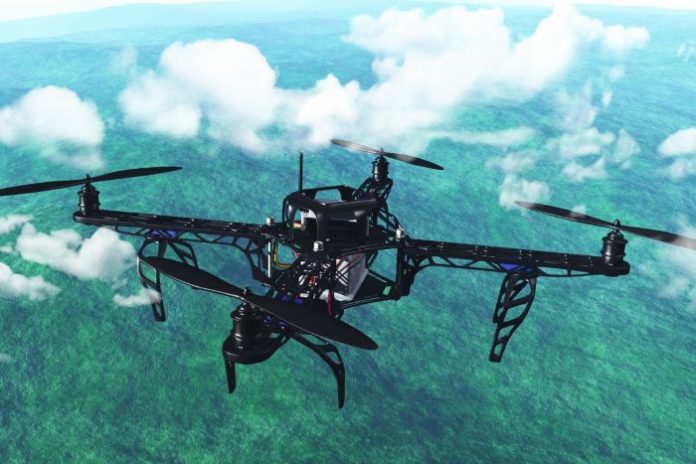Thanks to the incredible leaps in technology in recent years, the legal industry will never be the same. In the past, investigating a personal injury case often relied on witness statements, photographs taken on-site, and painstaking manual reconstruction of events. Today, technology is rewriting the rules of investigation, giving attorneys and investigators unprecedented tools to gather evidence, analyze incidents, and present compelling cases in court. From drones hovering above accident scenes to AI-powered reconstruction software, the digital era is transforming personal injury investigations in ways that were unimaginable just a decade ago.
Table of contents
- Drones: Capturing the Bigger Picture
- AI-Powered Accident Reconstruction
- Wearable Technology and IoT Devices
- Advanced Forensic Tools
- Data Analytics in Liability Assessment
- Virtual Reality for Courtroom Presentations
- Cybersecurity and Evidence Integrity
- The Human Element Remains Essential
- The Future of Personal Injury Law is Digital
Drones: Capturing the Bigger Picture
One of the most visible innovations in personal injury investigations is the use of drones. Small, agile, and equipped with high-resolution cameras, drones can quickly capture accident scenes from angles that were previously difficult or impossible to document. For instance, in multi-car collisions on busy highways, drones can provide aerial views showing vehicle positions, skid marks, and environmental conditions before anyone disturbs the scene.
This bird’s-eye perspective is not just visually impressive—it can be critical in establishing fault and understanding the dynamics of an accident. Courts and insurance companies increasingly accept drone footage as credible evidence, giving lawyers a valuable resource that strengthens their clients’ cases. A skilled Car Accident Lawyer can combine drone footage with AI reconstruction data to build comprehensive evidence packages that demonstrate fault and support maximum compensation claims for injured clients.
AI-Powered Accident Reconstruction
While drones capture raw data, AI steps in to interpret it. Modern reconstruction tools use artificial intelligence to analyze photos, videos, and sensor data to simulate accidents with astonishing accuracy. These tools can calculate vehicle speeds, angles of impact, and potential injury outcomes based on physics models and real-world patterns.
For example, AI reconstruction software can take footage from security cameras or drones and generate a 3D simulation of an incident, showing exactly how a collision unfolded. For lawyers, this means more precise evidence to support claims, and for clients, it means a better chance of proving their case efficiently.
Wearable Technology and IoT Devices
Personal injury cases are not limited to car accidents. Slip-and-fall incidents, workplace injuries, and even sports-related accidents can now be investigated with data from wearable technology and IoT devices. Smartwatches, fitness trackers, and connected health monitors can provide timestamps, heart rate data, or even motion analysis that can corroborate a client’s account of an accident.
Imagine a construction worker suffering an injury on-site. Sensors embedded in safety helmets or vests can log impact forces, alerting investigators to the severity and exact circumstances of the incident. This level of detail allows lawyers to build more accurate cases while reducing reliance on potentially unreliable human memory.
Advanced Forensic Tools
Forensic analysis has also entered the digital age. Tools like 3D laser scanners and high-resolution mapping devices can recreate accident scenes with millimeter precision. These devices capture every contour of the environment—from road grooves to pavement texture—creating a digital twin that can be revisited long after the actual scene has been cleared.
In court, these detailed reconstructions allow jurors to visualize incidents clearly, making complex accident scenarios easier to understand. Additionally, this technology reduces disputes about scene conditions, helping legal professionals focus on the substantive facts rather than procedural arguments.
Data Analytics in Liability Assessment
Beyond capturing what happened, modern technology helps investigators understand why it happened. Data analytics can comb through traffic patterns, maintenance records, or equipment logs to identify underlying causes. For example, repeated incidents at a particular intersection may indicate a design flaw, poor lighting, or signal timing issues.
Lawyers armed with this data can craft stronger arguments for liability and damages. In personal injury law, proving systemic issues or negligence often requires more than anecdotal evidence—analytics provide a hard, defensible basis for claims.
Virtual Reality for Courtroom Presentations
Even the courtroom itself is evolving. Virtual reality (VR) allows jurors and judges to experience accident scenes as if they were there. Lawyers can guide viewers through a virtual reconstruction, highlighting critical angles, distances, and timelines. This immersive approach is particularly helpful in complex cases involving multiple vehicles, environmental factors, or intricate machinery.
For attorneys, VR isn’t just a flashy gimmick—it’s a tool for clarity. When jurors can “walk through” a simulated scene, they better understand the evidence, which can translate to more favorable outcomes for clients.
Cybersecurity and Evidence Integrity
As technology takes center stage in personal injury investigations, cybersecurity has become a crucial consideration. Digital evidence—from drone footage to wearable data—must be stored, transmitted, and presented securely to prevent tampering or loss. Encryption, chain-of-custody protocols, and secure cloud storage are now standard practices in modern legal investigations.
Ensuring data integrity isn’t just a technical concern; it’s a legal necessity. Courts scrutinize digital evidence closely, and attorneys must be able to demonstrate that their tools and processes maintain accuracy and authenticity.
The Human Element Remains Essential
While technology is transforming personal injury investigations, it doesn’t replace the expertise of experienced legal professionals. Interpreting data, crafting narratives, and understanding legal strategy still require human insight. For example, a Queens personal injury lawyer can use drone footage or AI simulations to strengthen a case in a bustling urban environment, while a Lafayette personal injury lawyer might leverage the same tools to present compelling evidence in more regional or rural settings. In both cases, the lawyer’s judgment remains essential in guiding evidence toward a clear and persuasive legal argument.
The Future of Personal Injury Law is Digital
The integration of technology into personal injury investigations is only accelerating. Emerging tools like AI-driven predictive analytics, autonomous drones, and real-time sensor networks promise to make investigations faster, more accurate, and more transparent. For tech-minded legal professionals, staying current with these innovations isn’t optional—it’s essential.
Ultimately, modern technology is helping personal injury law evolve into a more precise and evidence-driven field. By combining human expertise with digital tools, lawyers can uncover the truth more efficiently, provide stronger advocacy for clients, and ensure that justice is served in an increasingly complex world.











